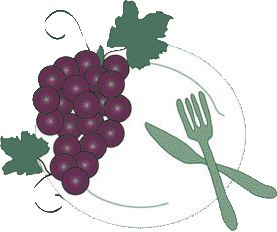
Better believe it, the 25-year reign of the Copper River salmon is over. The new king comes from the mighty Yukon River, and the architect of its ascendancy is (no real surprise) the same power-behind-the-throne, Jon Rowley.
Nothing personal, the assembled court seemed to say (to the Copper) at today's luncheon down at Elliott's Oyster House. You've had a remarkable run, leading Seattle diners into new realms of taste. But the new guy, well, he's everything you were (and still are) only moreso!
Technically, the more intense flavor comes from additional fat: up to 50 percent more of those nutritious Omega 3 oils. The Yukon River is 2,000 miles long and the salmon have to swim for up to two months without eating before they reach their spawning grounds. (The Copper is much shorter, though more rugged.)
Until last year, most Yukons were frozen and shipped to Japan; very few fresh fish ever made it out of Alaska. It's a long, tough slog from the village of Emmonak, pop. 767, so remote that a dozen eggs cost $5.50 past-pull-date milk is $10 a gallon, and an airplane ticket to Anchorage, 1,000 miles across the tundra, is $800. What's made the difference in this remote location is a five-year-old cooperative established by the local Yup'ik Eskimo community called Kwikpak Fisheries, which hooked up with Rowley to work out logistics and marketing.
Down on the Copper, the fishery is sophisticated: big boats with communications gear and power winches to reel in the gill nets. The mouth of the Yukon is broader and shallower, so boats are open skiffs; it's not unusual to find an entire family aboard to haul the nets in by hand. The natives have been fishing like this for the past 10,000 years.
What's different for the Yukon fishery this season is simple: ice. Kwikpak, buying only from boats that keep their catch iced, ships them by bush plane to Anchorage, then by regular airfreight to Seattle.
The season starts tomorrow and it's a short one, maybe three weeks, 30,000 to 60,000 fish max.
Rowley reminds us that the oilier the fish, the denser the flesh, and the more important to cook it properly. No rare, pink-in-the-middle preparation here; it needs to reach an internal temp of 115 degrees. A bit of salt is all it needs for seasoning. Sear it quickly, then let it absorb the heat of a 250-275-degree oven for ten minutes or so. It will ooze that nutritious Omega 3 oil all over the plate, speading its rich, deep flavors to a few simply grilled summer vegetables.
The fish will taste like velvet.
FRIDAY UPDATE: Video from Northwest Cable News.

The International Kitchen
Cooking school vacations in Italy, France & Spain.


 Who links to me?
Who links to me?